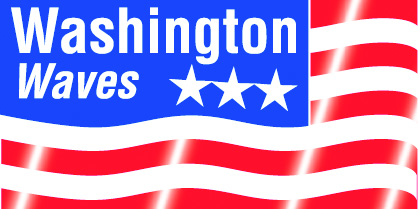Washington, D.C.—President Joe Biden and his administration announced actions to beef up cybersecurity at U.S. ports, provide secure cranes made in America and invest $20 billion over five years in port infrastructure.
For some time, Chinese-made cranes operating at U.S. ports have triggered concerns over possible cybersecurity threats.
The Coast Guard also issued a directive concerning actions by owners and operators of ship-to-shore cranes made in China to secure the maritime infrastructure’s digital ecosystem.
Biden signed an executive order giving the Coast Guard authority to respond to malicious cyber activity in the Marine Transportation System and control the movement of vessels that pose a threat to cybersecurity. Maritime transportation vessels and facilities will be required to shore up their cybersecurity and report cyber incidents.
Biden’s actions drew praise from the American Association of Port Authorities (AAPA).
“America’s ports work closely with our federal partners to maintain the highest possible standards of physical and cybersecurity,” AAPA President and CEO Cary Davis said. “We welcome and applaud President Biden’s actions which further empower the Coast Guard to keep our ports safe along with the administration’s efforts to build out domestic manufacturing capacity for key equipment.”
Saying the maritime industry is ready and willing to incentivize domestic manufacturing to build port equipment in the U.S., AAPA added it already has drafted a legislative proposal, the Crane Reshoring and National Enforcement of Supply Chain Security (CRANES) Act, to incentivize domestic manufacturing of cranes, similar to Congress’ CHIPS Act.
“We are calling on Congress to introduce and pass this bill,” AAPA said.
Funding Deadline
Congress returns this week with only days to reach an elusive agreement to avoid a partial government shutdown.
On March 1, temporary funding is scheduled to expire for four appropriations bills that include transportation, water resources, agricultural, veterans and military construction programs. Those include the U.S. Army Corps of Engineers and the Maritime Administration.
One week later, on March 8, stopgap funding for the other eight annual appropriations bills is scheduled to expire.
A “subset of issues” remain for top appropriators from both parties and both sides of the Capitol.
“Once a decision is made on those, we’ll be able to move quickly in closing out bills,” a congressional aide told The Waterways Journal.
House Speaker Mike Johnson (R-La.) could face challenges from hard-right members of his conference, which holds power with a historically slim majority.
New MMC Format
The Coast Guard announced it will begin issuing Merchant Mariner Credentials (MMCs) in a new format on March 1.
Necessitated by the complexity and degraded reliability of the printers used in the past, the National Maritime Center (NMC) stated, the new credential will replace the legacy passport-style red book and contain numerous security features such as micro-printing and foiling.
“You will no longer receive separate endorsement labels (i.e., stickers), but rather a new MMC document with the endorsements incorporated,” the NMC stated.
For additional information, visit the NMC website or contact its Customer Service Center at IASKNMC@uscg.mil or 1-888-IASKNMC (427-5662).
Principles, Requirements And Guidelines
The U.S. Army Corps of Engineers kicked off an official public comment period with the publication of its proposed rule to establish Agency Specific Procedures (ASPs) for implementation of the Principles, Requirements, and Guidelines for water resources investments.
Comments must be received by April 15 and identified by docket number COE-2023-0005.
They may be submitted via www.regulations.gov, by email to stacey.m.jensen.civ@ army.mil, and include the docket number or by mail to Stacey M. Jensen, 108 Army Pentagon, Room 3E474, Washington, DC 20310–0108.
As directed by Congress in a 2020 law, the rule is to provide a framework to govern how the Corps would evaluate proposed water resource investments, including identification of which Corps programs and activities are subject to the Principles, Requirements, and Guidelines.
For additional information, contact Stacey Jensen at 703-459-6026 or stacey.m.jensen.civ@army.mil.
Infrastructure Asset Portfolio
The U.S. Army Corps of Engineers and the Bureau of Reclamation released a joint report that provides an overview of the infrastructure asset portfolio and related asset management practices, collaboration efforts and future strategies.
In a press release on the “State of the Infrastructure: A Joint Report by the Bureau of Reclamation and the U.S. Army Corps of Engineers,” the two agencies noted their record investments in critical water resource construction projects.
“We are at a critical moment in our history with a once-in-a-generation investment in our nation’s civil works infrastructure,” Director of Civil Works Edward Belk Jr. said.
The report may be viewed on the agencies’ websites at usace.army.mil and at www.usbr.gov/.
LNG Export Bill
The House passed a bill to reverse the Biden administration’s pause on export approvals of liquefied natural gas (LNG) to non-free trade nations.
Approved by a vote of 224 to 200, H.R. 7176 went to the Democratic-controlled Senate, where it faces an uncertain future.
Nine Democrats joined Republicans in advancing the measure in the House.
Introduced by Rep. August Pfluger (R-Texas), the Unlocking Our Domestic LNG Potential Act of 2024 would transfer the authority to implement the pause on LNG export approvals from the Department of Energy to the Federal Energy Regulatory Commission.
Offshore Wind Permit
The Environmental Protection Agency (EPA) issued a Clean Air Act permit to Empire Offshore Wind LLC for its offshore wind farm project roughly 12 nautical miles (13.8 miles) south of Long Island, N.Y. and 17 nautical miles (19.6 miles) east of Long Branch, N.J.
Advanced with New York state as a partner, the project will include up to 147 offshore wind turbines, two offshore substations and the associated cables needed to transport the electricity.
EPA said the project also will include onshore components associated but not addressed in its air permit being issued.
Offshore construction is expected to begin this year and completed within four years.




